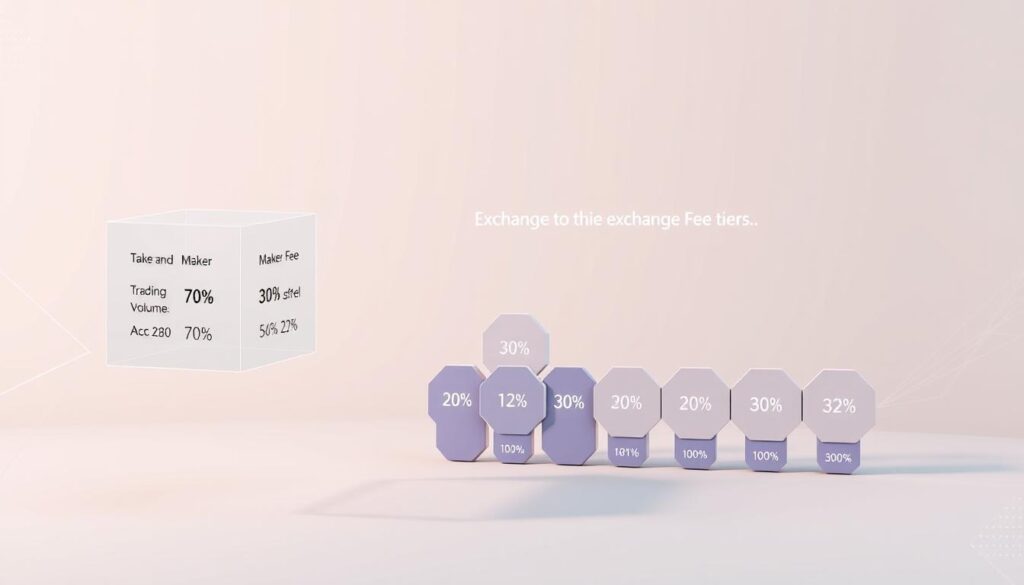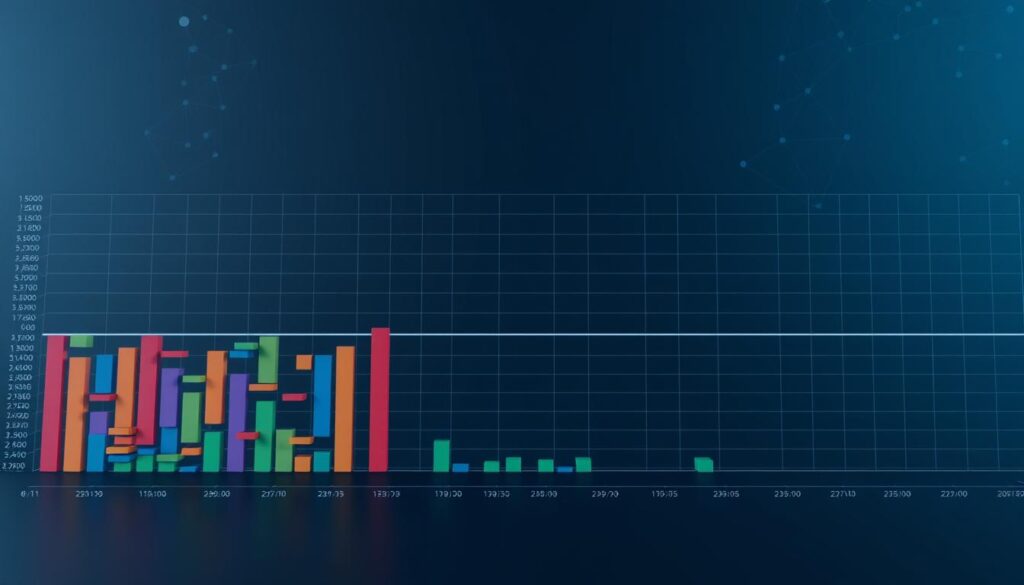Now Reading: Cryptocurrency market maker vs taker fees explained for day traders
- 01
Cryptocurrency market maker vs taker fees explained for day traders
Cryptocurrency market maker vs taker fees explained for day traders

Digital asset platforms rely on specialized fee systems to maintain active markets. These dual-charge models create incentives for participants while covering operational costs. Whether you’re executing rapid trades or building long-term positions, fee structures directly affect your net gains.
Orders fall into two categories based on their interaction with existing liquidity. Immediate executions consume available orders, while limit placements add new depth to order books. This distinction determines which fee tier applies to your transactions.
Exchanges typically reward users who improve market depth with lower charges. This approach encourages stable pricing and reduces volatility. Active participants should understand how their strategies align with these economic incentives to optimize costs.
Key Takeaways
- Platforms use fee models to balance liquidity supply and demand
- Immediate orders typically incur higher charges than limit placements
- Fee structures influence market stability and trader behavior
- High-volume strategies require careful fee tier analysis
- Order types automatically determine your participant category
Overview of Cryptocurrency Trading Dynamics
Efficient trading relies on two key roles: those who add and those who take liquidity. These participants form the foundation of order books, enabling instant transactions across digital exchanges. Their interactions determine pricing stability and execution speeds for all users.
Market Makers Explained
Market makers act as liquidity anchors by placing limit orders at strategic price points. These participants set buy prices slightly below current values and sell prices just above them. Their persistent orders fill gaps in the order book, creating opportunities for instant trades.
By continuously updating their positions, makers reduce price volatility during high activity. Platforms often reward this behavior with lower transaction costs. Successful strategies involve analyzing spread patterns and adjusting orders to match market momentum.
Market Takers Defined
Market takers prioritize speed over price precision, executing orders immediately using existing liquidity. These participants trigger price movements when large transactions absorb available limit orders. Their actions often reflect short-term strategies or urgent portfolio adjustments.
Takers include everyone from individual investors to algorithmic trading systems. While they pay higher fees per trade, their rapid executions help capitalize on fleeting opportunities. This dynamic creates a symbiotic relationship where takers depend on makers for accessible liquidity.
Understanding Fee Structures on Cryptocurrency Exchanges
Exchanges balance economic incentives through layered pricing models. These systems reward participants who enhance market efficiency while covering platform operational costs. Fee differentials between order types create distinct advantages for different trading approaches.

Maker Fee Advantages
Limit order placers enjoy reduced charges for adding depth to order books. Major platforms typically offer 33% to 400% lower fees compared to liquidity removers. Tiered systems amplify these benefits – high-volume contributors often reach VIP status with zero charges.
Bybit’s futures markets demonstrate this clearly. At equivalent volumes, limit order users pay six times less than immediate executors. Some exchanges even provide rebates to top liquidity providers, turning cost management into profit potential.
Taker Fee Implications
Immediate order execution carries premium pricing. Platforms charge higher fees for consuming existing liquidity, particularly during volatile periods. This structure discourages excessive market impact from large instant trades.
Spot markets sometimes equalize charges for small-volume participants. However, frequent takers quickly encounter escalating costs. Strategic traders often mix order types – using limit placements for accumulation and market orders for timely exits.
Cryptocurrency market maker vs taker fees explained for day traders: A Closer Look
High-frequency operators face unique challenges when balancing execution quality with expense control. Minor fee variances compound dramatically across hundreds of daily transactions, transforming seemingly small percentages into substantial costs.

Day Trading Implications
Immediate order execution becomes expensive at scale. A $10 million trade with 0.1% taker fees incurs $10,000 in charges alone. Combine this with slippage and futures premiums, and profits evaporate quickly.
Limit orders offer lower costs but require patience. In fast-moving markets, waiting for fills might mean missing a 5% price swing that outweighs weeks of fee savings. This tension defines modern short-term strategies.
Optimizing Your Trading Strategy
Smart operators split their approaches. They use limit placements to accumulate positions during calm periods, then switch to market orders for urgent exits. This hybrid method captures 60-80% of potential fee savings while maintaining agility.
Successful traders monitor liquidity depth before choosing order types. Thick order books allow limit placements without significant delay. Thin markets often demand immediate execution despite higher costs.
Volume-based fee tiers reward consistent activity. Those executing 50+ daily trades should negotiate custom rates with exchanges. Many platforms offer 20-40% discounts for high-frequency participants.
Liquidity, Order Books, and Price Impacts
Digital exchanges function like bustling marketplaces where buy and sell requests shape asset values. At the core lies the order book – a real-time ledger tracking every pending transaction. This system determines how easily assets can be traded without drastic price shifts.

Role of Limit Orders in Providing Liquidity
Limit orders act as building blocks for stable trading environments. When placed slightly above or below current levels, these orders create buffers between competing prices. This cushion allows participants to execute trades smoothly, even during rapid price movements.
Strategic placement matters. Sellers setting prices just above the highest bid or buyers positioning below the lowest ask add depth to order books. These non-immediate transactions form layers of available liquidity, reducing the risk of sudden price gaps.
Robust order books prevent extreme volatility. Thick liquidity pools absorb large transactions without significant price changes. Narrow bid-ask spreads emerge naturally when numerous limit orders cluster near current values, benefiting all traders through fairer pricing.
Efficient markets rely on this balance. Active participants who consistently add limit orders help maintain orderly price discovery. Their contributions enable quicker executions while minimizing unexpected slippage across thousands of daily trades.
Advanced Insights: Trading Strategies and Fee Management
Sophisticated traders employ precision tactics to minimize costs while maximizing execution quality. Strategic fee management separates profitable operators from those drained by hidden expenses.

Leveraging Volume for Fee Reductions
High-volume traders unlock negative fee structures on major platforms. Binance’s BUSD futures markets reward users with rebates after surpassing $15 million in monthly volume. This turns cost centers into revenue streams for active participants.
Balancing Speed and Cost in Orders
Smart traders split large orders across multiple price levels. Partial fills through limit placements capture maker discounts while market orders secure urgent positions. Consider these approaches:
- Use iceberg orders for large asset purchases
- Combine limit and stop-loss triggers
- Monitor liquidity depth before choosing order types
Considering Order Timing for Optimal Pricing
Volatility patterns dictate ideal entry points. Limit orders placed during Asian trading hours often fill at better prices due to thinner liquidity. Night owls can capture 18% wider spreads compared to peak US market times.
Withdrawal fees vary significantly across networks – Ethereum gas costs frequently exceed Bitcoin’s by 300%. Always factor these expenses into your net return calculations when moving assets between platforms.
Final Thoughts for Successful Crypto Trading
Mastering fee dynamics proves essential for maintaining profitability in digital asset exchanges. Unlike traditional finance, most platforms eliminate account charges and minimum balances, creating accessible entry points. Traders must still verify identities through KYC processes, though some venues permit limited activity without full documentation.
Strategic participants balance immediate execution needs with long-term cost efficiency. Limit order strategies often reduce expenses but require patience, while market orders prioritize speed at premium rates. Successful operators adapt their approach based on real-time liquidity and personal risk profiles rather than chasing universal solutions.
Regularly compare fee models across exchanges, as structures vary significantly between platforms. Those executing frequent trades should monitor volume-based discounts and rebate opportunities. For deeper insights into fee mechanics, explore this guide on liquidity incentives.
Remember: 24/7 global markets enable unique strategies unavailable in traditional finance. Combine timing awareness with order type selection to maximize gains while minimizing unnecessary costs.












